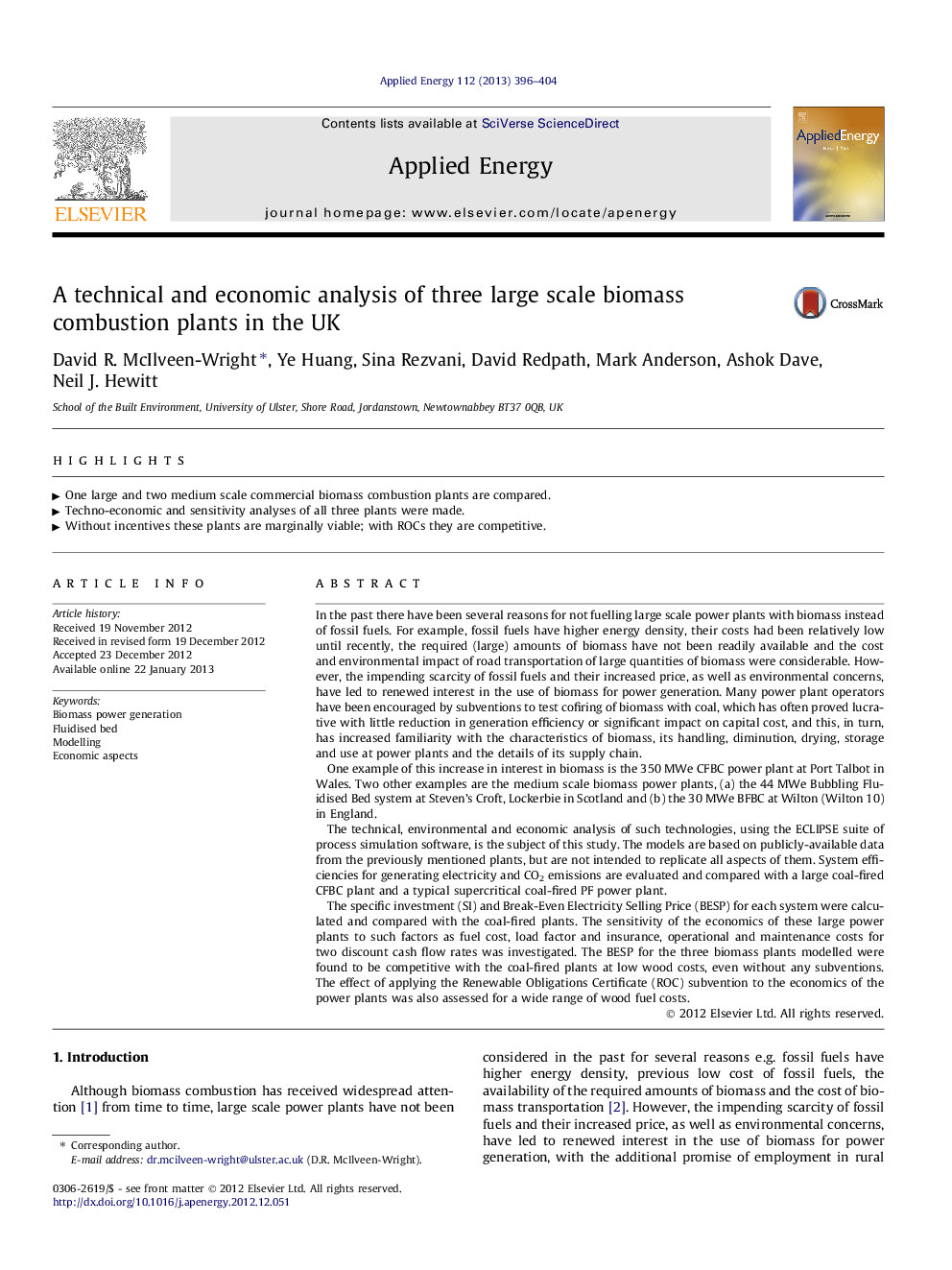| کد مقاله | کد نشریه | سال انتشار | مقاله انگلیسی | نسخه تمام متن |
|---|---|---|---|---|
| 242913 | 501913 | 2013 | 9 صفحه PDF | دانلود رایگان |

In the past there have been several reasons for not fuelling large scale power plants with biomass instead of fossil fuels. For example, fossil fuels have higher energy density, their costs had been relatively low until recently, the required (large) amounts of biomass have not been readily available and the cost and environmental impact of road transportation of large quantities of biomass were considerable. However, the impending scarcity of fossil fuels and their increased price, as well as environmental concerns, have led to renewed interest in the use of biomass for power generation. Many power plant operators have been encouraged by subventions to test cofiring of biomass with coal, which has often proved lucrative with little reduction in generation efficiency or significant impact on capital cost, and this, in turn, has increased familiarity with the characteristics of biomass, its handling, diminution, drying, storage and use at power plants and the details of its supply chain.One example of this increase in interest in biomass is the 350 MWe CFBC power plant at Port Talbot in Wales. Two other examples are the medium scale biomass power plants, (a) the 44 MWe Bubbling Fluidised Bed system at Steven’s Croft, Lockerbie in Scotland and (b) the 30 MWe BFBC at Wilton (Wilton 10) in England.The technical, environmental and economic analysis of such technologies, using the ECLIPSE suite of process simulation software, is the subject of this study. The models are based on publicly-available data from the previously mentioned plants, but are not intended to replicate all aspects of them. System efficiencies for generating electricity and CO2 emissions are evaluated and compared with a large coal-fired CFBC plant and a typical supercritical coal-fired PF power plant.The specific investment (SI) and Break-Even Electricity Selling Price (BESP) for each system were calculated and compared with the coal-fired plants. The sensitivity of the economics of these large power plants to such factors as fuel cost, load factor and insurance, operational and maintenance costs for two discount cash flow rates was investigated. The BESP for the three biomass plants modelled were found to be competitive with the coal-fired plants at low wood costs, even without any subventions. The effect of applying the Renewable Obligations Certificate (ROC) subvention to the economics of the power plants was also assessed for a wide range of wood fuel costs.
► One large and two medium scale commercial biomass combustion plants are compared.
► Techno-economic and sensitivity analyses of all three plants were made.
► Without incentives these plants are marginally viable; with ROCs they are competitive.
Journal: Applied Energy - Volume 112, December 2013, Pages 396–404